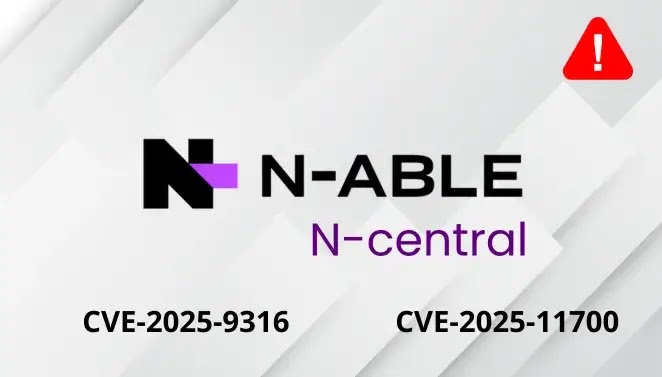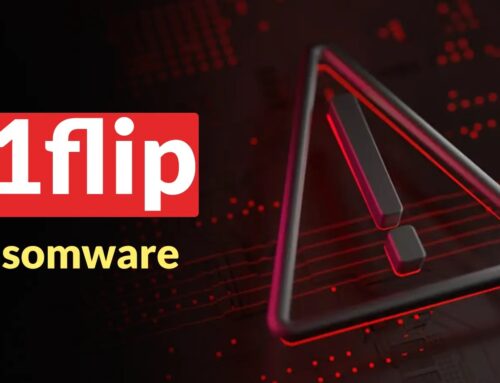
Critical N-able N-central Vulnerabilities Allow attacker to interact with legacy APIs and read sensitive files
Critical N-able N-central Vulnerabilities Exposed: Unauthenticated Access to Sensitive Data
In the complex landscape of remote monitoring and management (RMM), the security of platforms is paramount. Recently, critical vulnerabilities within N-able N-central have come to light, revealing a concerning potential for unauthenticated attackers to bypass security measures, interact with legacy APIs, and exfiltrate highly sensitive files. This exposure underlines the continuous need for vigilant security practices and timely remediation in enterprise IT environments.
The disclosures, brought forth by security researchers at Horizon3.ai, detail a chain of vulnerabilities that could grant unauthorized access to critical system information, including credentials and database backups. Such access could lead to severe data breaches, system compromise, and significant operational disruption for organizations relying on N-able N-central for their IT infrastructure management.
Understanding the N-able N-central Vulnerability Chain
The reported vulnerabilities in N-able N-central are not isolated incidents but rather a chain of weaknesses that, when exploited together, present a formidable threat. These include:
- Authentication Bypass: Attackers can circumvent the platform’s authentication mechanisms, gaining unauthorized entry without valid credentials.
- Access to Legacy APIs: The vulnerabilities permit interaction with legacy API endpoints that may lack modern security controls, providing a gateway for further exploitation.
- Sensitive File Exfiltration: The ultimate consequence of this chain is the ability for attackers to read and exfiltrate critical files such as configuration data, user credentials, and even full database backups. This level of access is catastrophic, offering an attacker a complete blueprint of the managed infrastructure.
This series of flaws is particularly concerning given that N-able N-central was previously listed on the CISA Known Exploited Vulnerabilities Catalog earlier this year, highlighting a persistent challenge in maintaining its security posture.
Impact and Risks of Unauthenticated Access
The implications of these N-able N-central vulnerabilities are far-reaching. Unauthenticated access to an RMM platform is a dream scenario for threat actors. With the ability to:
- Steal Credentials: Direct access to stored credentials means an attacker can compromise connected systems, servers, and applications that N-central manages.
- Exfiltrate Database Backups: Database backups often contain a treasure trove of sensitive information, including customer data, intellectual property, and internal records.
- Gain System Control: By leveraging the RMM’s capabilities, attackers could potentially deploy malware, manipulate configurations, or disrupt operations across an entire IT estate.
- Achieve Persistence: Exploiting these vulnerabilities could allow attackers to establish persistent footholds within an organization’s network, making detection and eradication significantly more challenging.
Organizations using N-able N-central must prioritize these findings, as the potential for unapproved access to sensitive data poses a critical business risk.
Remediation Actions for N-able N-central Users
Addressing these critical N-able vulnerabilities requires immediate and decisive action. Organizations should follow these remediation steps:
- Apply Patches Immediately: N-able has released patches to address these vulnerabilities. Ensure all N-central instances are updated to the latest secure version as soon as possible. Consult N-able’s official security advisories for specific version requirements.
- Isolate and Segment: Implement strict network segmentation to limit the reach of a compromised N-central instance. Ensure that N-central has only the necessary network access to perform its functions.
- Strong Authentication and MFA: Enforce strong, unique passwords and multi-factor authentication (MFA) for all N-central user accounts. While this chain bypasses authentication, strong authentication remains a crucial defense-in-depth measure.
- Regular Audits and Monitoring: Conduct frequent security audits of your N-central environment and continuously monitor for suspicious activities or unauthorized access attempts. Pay close attention to logs for unusual API calls or file transfer activities.
- Review Access Controls: Regularly review and restrict user permissions within N-central to the principle of least privilege. Ensure users only have access to the resources absolutely necessary for their roles.
Relevant N-able N-central Vulnerabilities & CVEs
Currently, the public reporting on these specific vulnerabilities does not consistently assign unique CVE IDs in the same consolidated manner that other critical vulnerabilities typically receive. However, organizations should consult N-able’s official security advisories for the most up-to-date information regarding patches and any associated CVE IDs that may be assigned or further detailed. Often, a chain of vulnerabilities can be addressed by a single cumulative update from the vendor.
Tools for Detection and Mitigation
While direct detection of these specific vulnerabilities might require vendor-specific scanning, general cybersecurity best practices and tooling can significantly enhance an organization’s ability to identify and respond to threats.
| Tool Name | Purpose | Link |
|---|---|---|
| Vulnerability Scanners (e.g., Tenable Nessus, Qualys, Rapid7 InsightVM) | Identify known vulnerabilities and misconfigurations in networked systems, including RMM platforms. | Tenable Nessus |
| Security Information and Event Management (SIEM) systems (e.g., Splunk, IBM QRadar, Microsoft Azure Sentinel) | Collect, monitor, and analyze security logs from various sources to detect suspicious activity and potential breaches. | Splunk Enterprise Security |
| Endpoint Detection and Response (EDR) solutions (e.g., CrowdStrike Falcon, SentinelOne, Microsoft Defender for Endpoint) | Provide advanced threat detection, investigation, and response capabilities on endpoints where N-central agents might reside. | CrowdStrike Falcon |
| Network Intrusion Detection/Prevention Systems (NIDS/NIPS) | Monitor network traffic for malicious activity and can block known attack patterns. | Snort |
Conclusion
The discovery of critical N-able N-central vulnerabilities underscores the persistent and evolving nature of cyber threats targeting core IT infrastructure. The potential for unauthenticated access to sensitive data, including credentials and database backups, represents a significant risk that demands prompt attention. Prioritizing vendor-issued patches, implementing robust security controls, and maintaining continuous vigilance are essential steps for organizations to protect themselves against sophisticated attacks exploiting such weaknesses. Proactive security measures are not merely advisable; they are imperative for safeguarding digital assets and maintaining operational integrity.





